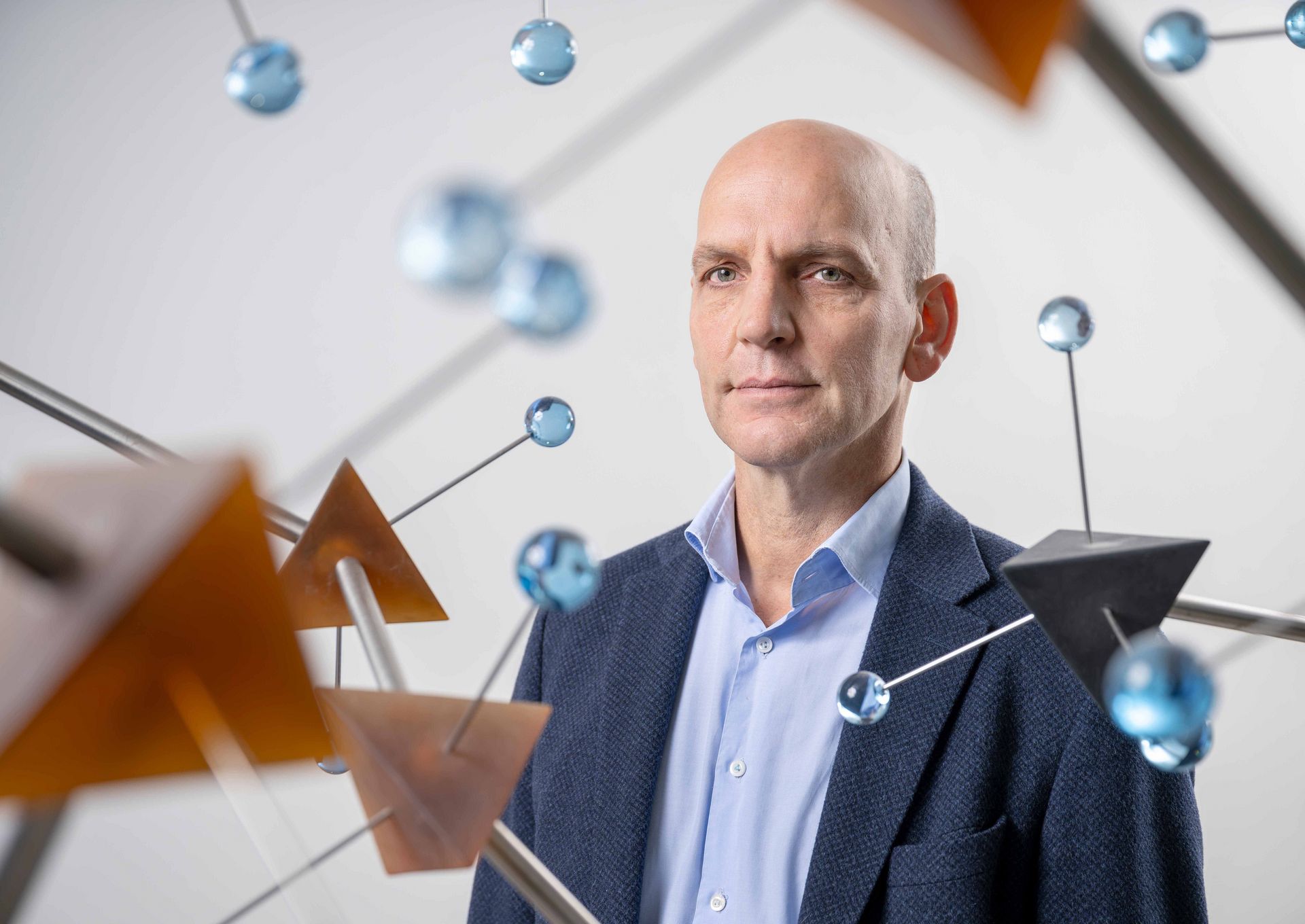
The perfect chemical reaction
If we want to get to grips with global warming, we need methods to remove carbon dioxide from the atmosphere—and that on a large scale. At the Max-Planck-Institut für Kohlenforschung, Nobel laureate Benjamin List wants to enable the photocatalytic splitting of CO2.
“The people who are crazy enough to think they can change the world are the ones who do.”
Steve Jobs, co-founder of Apple
Benjamin List, director of the Department of Homogeneous Catalysis at the Max-Planck-Institut für Kohlenforschung in Mülheim an der Ruhr, Germany, is aware that his idea sounds a little crazy. But he also likes to quote Steve Jobs, adding that “after all, a crazy idea is a necessary condition—although certainly not a sufficient one—for a revolutionary discovery”. The brilliant, not to say “mad”, idea that List has hatched is at heart just a single chemical reaction, albeit one that could change the world.
In a project that was recently awarded a ten-year grant (2025 to 2034) from the Werner Siemens Foundation (WSS), List will begin investigating the photocatalytic splitting of carbon dioxide. With the help of light energy, he wants to break down carbon dioxide (CO2) into carbon (C) and oxygen (O2). Written as a chemical equation, the reaction is CO2 → C + O2.
In many aspects, the intended reaction resembles artificial photosynthesis that has been reduced to the max. Indeed, it imitates what plants, algae and some bacteria have been doing for millions of years, although the natural process also involves water when using sunlight to split the CO2 into carbohydrates and oxygen: CO2 + H2O → CH2O + O2.
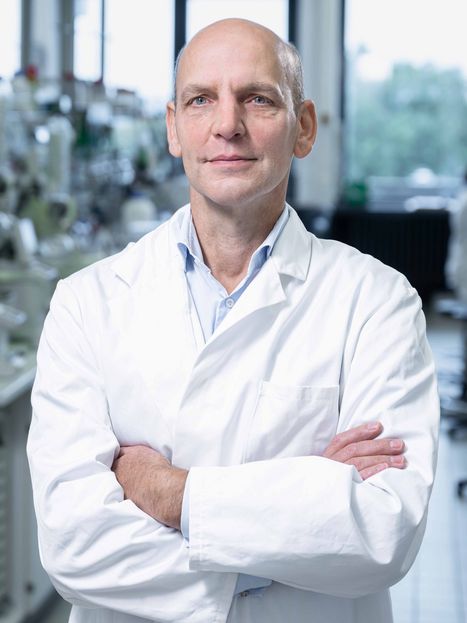
CO2 must go
List says that realising this direct, photocatalytic reduction of carbon dioxide into its basic elements would be a “perfect chemical reaction” and a dream come true, as it could contribute to solving one of humanity’s biggest problems: global warming. Since the advent of industrialisation, burning carbon-based fossil fuels like coal, oil and natural gas, has increased the amount of carbon dioxide in the atmosphere from roughly 280 ppm (particles per million) to 425 ppm, bringing about a marked rise in the earth’s temperatures.
Although the most effective climate protection measure is and remains phasing out fossil fuels, we’ve made only sluggish progress in transitioning to renewable energies. And most likely a certain percentage of energy generation from fossil fuels will continue to be necessary to cover our energy demand. Further compounding the problem is that the elevated levels of carbon dioxide in the atmosphere won’t dissipate on their own any time soon. “All our efforts to curb the production of CO2 won’t be enough to protect the global climate,” Benjamin List says, adding that we must also remove carbon dioxide from the atmosphere.
Pure coal
To be sure, many ideas and methods for removing CO2 from the atmosphere are already being pursued; in particular, researchers and start-up companies are seeking ways to realise the underground storage of CO2 captured from exhaust fumes or the atmosphere, or to utilise the greenhouse gas as a resource in new chemical processes. But because humans are releasing such massive amounts of carbon dioxide into the atmosphere, additional capture and utilisation methods are an absolute necessity.
List’s proposed reaction also has clear advantages over more standard procedures, mainly because it produces carbon in its pure form—which, as coal, for example, would be much easier and safer to store than gaseous CO2. “What’s more, carbon is a very versatile element,” Benjamin List continues, “and this ‘solar carbon’ could be used as a basis in a sustainable chemical industry, for producing sustainable petrol and generating electricity, or as a building material for houses or roads.” Another advantage would be that his reaction requires no water, meaning it would also be an option in arid regions.
Energy-intensive reaction
Nevertheless, there’s much to do before the new reaction can be implemented on a large scale. The idea is particularly risky—and maybe a little crazy—because it entails a so-called upward reaction that consumes a great deal of energy. “This is no trivial matter, but free, virtually unlimited sunlight makes the idea theoretically feasible,” Benjamin List says, adding that photosynthesis in plants requires significantly more energy than his reaction—and that nature still gets the job done. Indeed, this is how plants and algae generate billions of metric tons of organic matter and oxygen every year.
On another note: if anyone has what it takes to find seemingly impossible chemical reaction pathways, it’s Benjamin List. The fifty-six-year-old was awarded the Nobel Prize in Chemistry in 2021 for the development of an entirely new toolkit for the customised construction of molecules: rather than accelerating chemical reactions by means of highly complex enzymes or expensive, toxic metals, List’s “asymmetric organocatalysis” functions with small organic molecules such as amino acids.
A major advantage of these novel catalysts is their asymmetrical effect. Traditionally, when chemists produce new molecules, they often deal with situations in which two different molecules form that are mirror images of each other, much like arms and hands in the human body. Often, however, only one—the more effective version—is wanted; particularly in the case of pharmaceuticals, the effects of “image” and “mirror image” are frequently not identical.
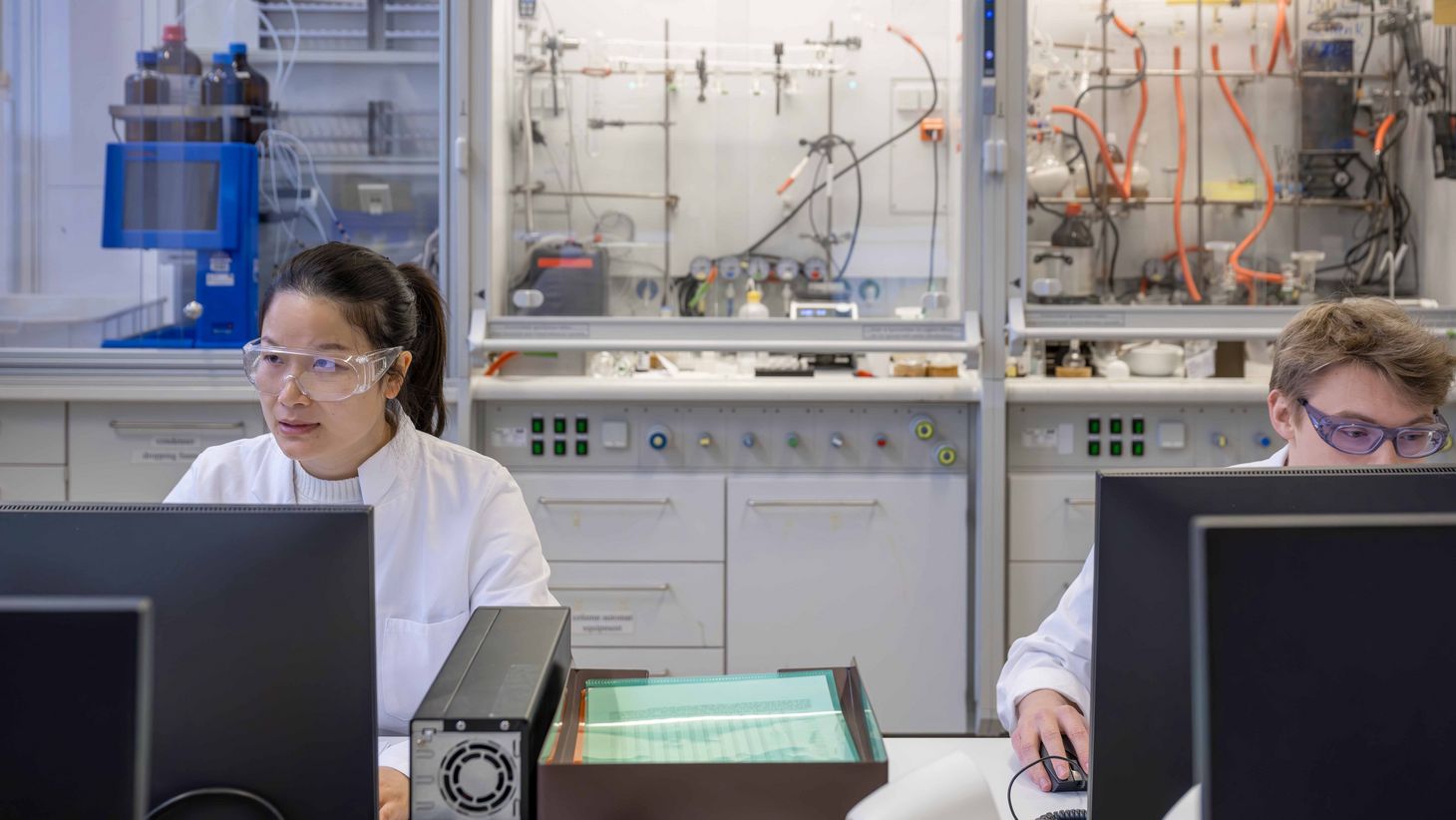
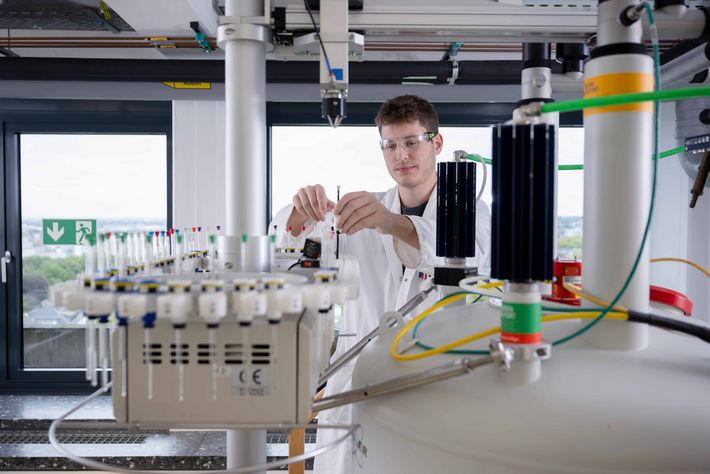
Various approaches
Over the next ten years, Benjamin List wants to find out which tools and methods can be used for photocatalytic CO2splitting. For the project proposal submitted to WSS, he and his team designed two catalytic cycles that, at least theoretically, enable light-driven CO2 splitting: over a series of complex steps, the carbon dioxide is excited and, using light energy, split.
He and his team also want to pursue a second avenue of research: catalysis on diamond or coal surfaces. These carbon-based materials are very interesting because they’re cheap, non-toxic and probably available in large quantities, List explains. “But we have to be careful that no soot deposits form on the catalytic surface, which would deactivate it.”
A third approach in the project is enabling biocatalysis using microbes and bacteria that are capable of producing coal from carbon dioxide. Here, the idea is to improve the catalytic performance of these organisms in the lab by means of targeted evolution—in other words, to run series of experiments and select the mutations that are particularly efficient in breaking down carbon dioxide.
When asked why no one else has ever researched the proposed reaction pathway, Benjamin List says the amount of energy it consumes could certainly be a deterrent. “But sometimes we also just don’t see the simplest and best solutions.” Especially as, in the past, there was no real reason for wanting this kind of reaction: “Large quantities of coal and atmospheric oxygen are already available, so why would anyone think about using energy-intensive procedures to fabricate them artificially?”
Leaving no stone unturned
List says he finds it fascinating that the proposed reaction is already taking place without a catalyst—in the outer atmosphere of Mars, for example, but also here on our own planet. The chemical formula of CO2 is actually O=C=O, meaning the two oxygen atoms bind themselves on the carbon atom from either side. When placed under high-energy UV radiation, this “normal” CO2 is converted into a molecule with the chemical formula C=O=O, List explains. “And C=O=O can then be split into CO and O. But there’s also a second reaction pathway by which C and O2 form.”
List readily admits that this uncatalysed reaction pathway needs a lot of energy. “But who knows—and this is the question at the heart of my project—maybe it can be catalysed.” Much work remains before the “perfect reaction” can be realised, and the project’s outcome is far from certain. But the Nobel laureate is also clear-eyed about what’s at stake, and he believes we must try every possible avenue to stop climate change: “No option should be excluded from the outset. And certainly not one that—if it works—would be relatively inexpensive and safe.”
But even if this specific idea doesn’t come to fruition, Benjamin List is certain that he and his researchers will learn a great deal over the course of the project—and this, ultimately, is the goal of basic research. List is currently building his team for the project, which is scheduled to begin in 2025. He stresses that finding the right staff is the first, and decisive, step: “Because creative, dedicated researchers are the sine qua non in science. If you don’t have an excellent team, you won’t achieve anything.”
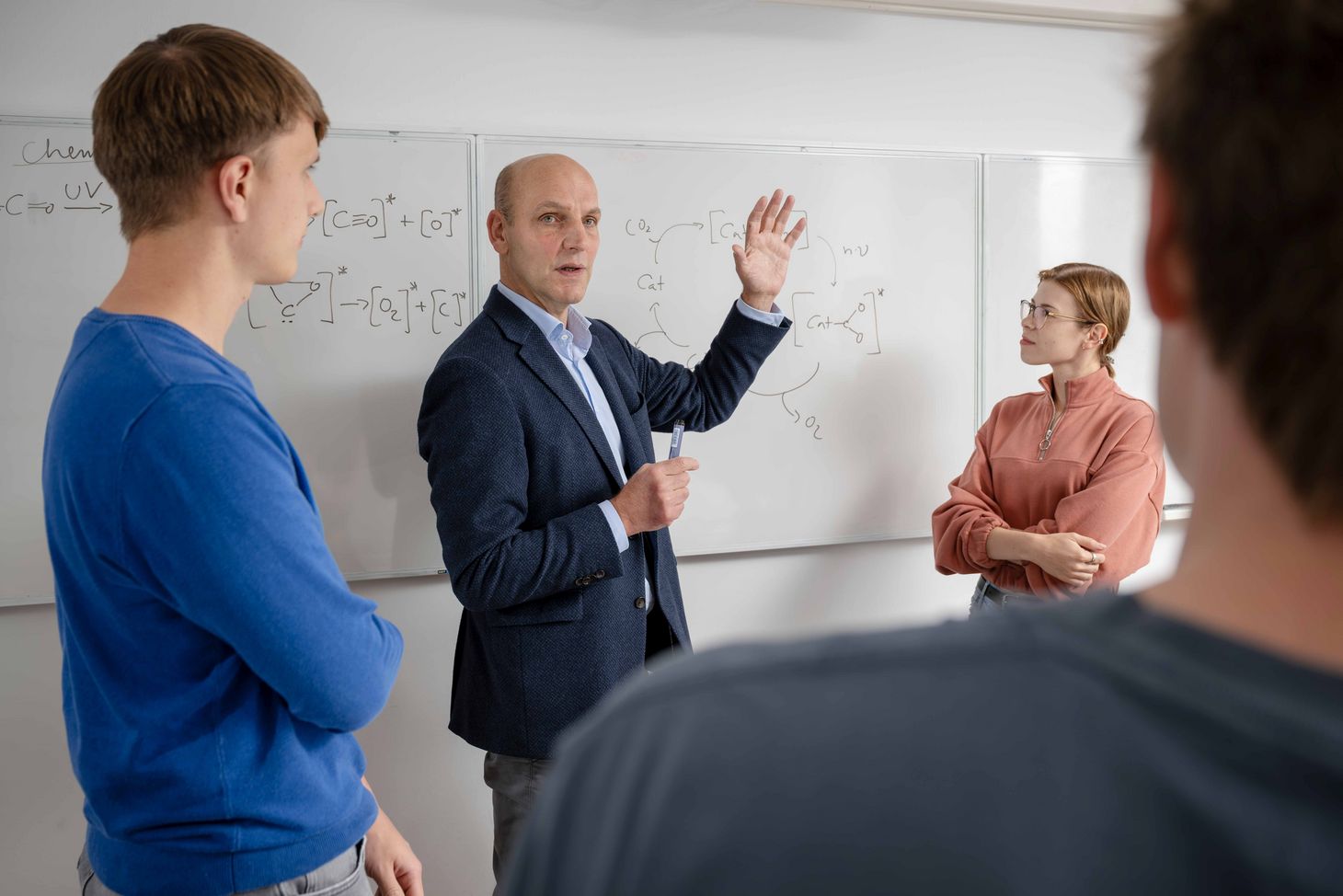
Facts and figures
Funding from the Werner Siemens Foundation
10 million euros
Project duration
2025 to 2034
Project leader
Prof. Dr Benjamin List, Max-Planck-Institut für Kohlenforschung, Mülheim an der Ruhr